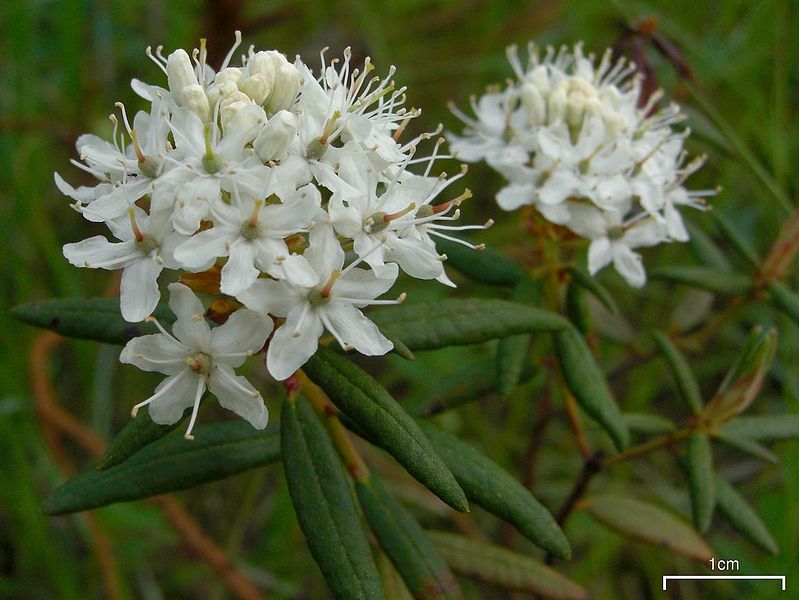Labrador Tea

Botanical Name: Ledum groenlandicum
Common Name: Labrador Tea
Other Names: Caa’uq, nunallaq caa yuq
Found in: Peaty soils, bogs, muskegs, moist conifer forests, meadows.
Physical Characteristics: Labrador tea is a low, evergreen shrub which grows in dense colonies. These shrubs are about 0.3 to 0.8 m tall and have narrow leaves with rolled edges. They bear bunches of numerous white flowers, which are aromatic and sticky, and are meant to attract pollinators.
Nutritional Value: tannic acid, arbutin, resin, and mineral salts. 3 Leaves contain 0.3% to 2.5% volatile oil, including the sesquiterpenes ledol and palustrol (ledum camphor), with valeric and other volatile acids, ericolin, and ericinol
Parts of the plant used: Leaves
When plant should be gathered: Mid April to early June (but can be found year round)
Plant applications: decoction/tea
Reported Benefits: It is believed to have many medicinal benefits, and is very commonly used to ‘cure’ many diseases. It's uses range from the common cold, cough, upper respiratory infections to flu symptoms, skin sores and eczema and upset stomach. It is also a common remedy for the effects of a hangover and while not a cure, it helps to alleviate the symptoms. It consists of narcotic properties which is sometimes used for relieving pain, but can be harmful if consumed in high concentration.
Preparation/Processing: Used as a spice, its used for flavoring. It’s usually combined with meat to increase its flavor.
Tea made from the leaves is considered to be very refreshing. A tea for coughs, colds, bronchial infections and pulmonary infections can be made by adding one teaspoonful of dried leaves to one cup of boiling water. To make tea, do not boil the leaves as this will release the harmful alkaloid andromedotoxin” (Scott, 2010). Steep the leaves instead.
Another use for this tea is to apply to skin sores and eczema to help relieve itching. If a strong enough batch is made it can also be applied to the hair to kill lice.
WARNING: This plant contains the toxic substance ledol. More ledol is released through boiling than steeping. Used in moderation, Labrador tea is generally safe. However, larger doses of ledol, a narcotic toxin, causes drowsiness, cramps, heart palpitations, paralysis, or even death. Internal ingestion is not recommended for people with high blood pressure or heart palpitations.
